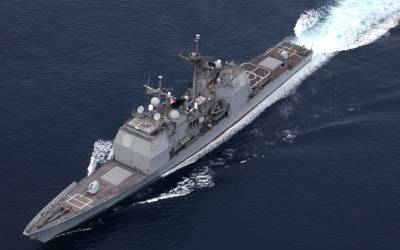Americas LIG Nex 1, a South Korean defense contractor, is ramping up efforts to secure a historic arms deal with the United States. The company aims to finalize an export contract for its Bigung 2.75-inch (70mm) infrared-guided anti-ship missile system. This potential...
University-related Articles
NG Tapped For Triton Systems | Safran To Support Qatar’s Rafales | Taiwan Acquires Additional SkyGuardians
Americas Northrop Grumman Systems won a $19 million modification, which provides logistics and test support for mission control and operator training systems as well as associated engineering and field service representative technical support to sustain MQ-4C Triton...
The MQ-4C Triton: Poseidon’s Unmanned Herald
BAMS Operation Concept (click to view full) The world's P-3 Orion fleets have served for a long time, and many are reaching the end of their lifespans. In the USA, and possibly beyond, the new P-8 Poseidon Multi-mission Maritime Aircraft will take up the P-3's role....
France’s Rafale
Dassault Rafale (click for cutaway view) Will Dassault's fighter become a fashionably late fighter platform that builds on its parent company's past successes - or just "the late Rafale"? It all began as a 1985 break-away from the multinational consortium that went on...
Canada Gets Mobile User Objective System | North Macedonia Gets US JLTVs | NATO scrambles Swedish Gripens for the first time
Americas The State Department has approved Canada’s request to gain access to the Mobile User Objective System service and procure associated logistics and program support services from the US government under a potential $138 million foreign military sales agreement....
The JAS-39 Gripen: Sweden’s 4+ Generation Wild Card
South African JAS-39D (click to view full) As a neutral country with a long history of providing for its own defense against all comers, Sweden also has a long tradition of building excellent high-performance fighters with a distinctive look. From the long-serving...
F-35 To Be Able To Carry Nukes | General Motors Finished Testing ISV For UAE | Philippines Get Guarani APCs
Americas Lockheed Martin’s F-35A Joint Strike Fighter aircraft has received authorization to carry nuclear bombs. Russ Goemaere, a spokesman for the F-35 Joint Program Office (JPO), recently told Breaking Defense that the much-awaited certification was actually...
Triman Tapped For AEGIS Processor | Kuwait To Get More Eurofighters In The Next Months | Latvia Bolsters Border Defense
Americas Triman Industries won $21 million firm-fixed-price, for the procurement of five components of the multi-mission signal processor used in the AEGIS combat system. The ordering period is expected to be completed by November 2024. All work will be performed in...
Serious Dollars for AEGIS Ballistic Missile Defense (BMD)
AEGIS-BMD: CG-70 launches SM-3 (click to view full) The AEGIS Ballistic Missile Defense System seamlessly integrates the SPY-1 radar, the MK 41 Vertical Launching System for missiles, the SM-3 Standard missile, and the ship's command and control system, in order to...






